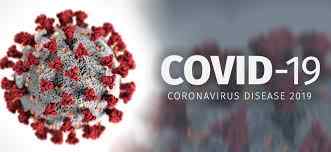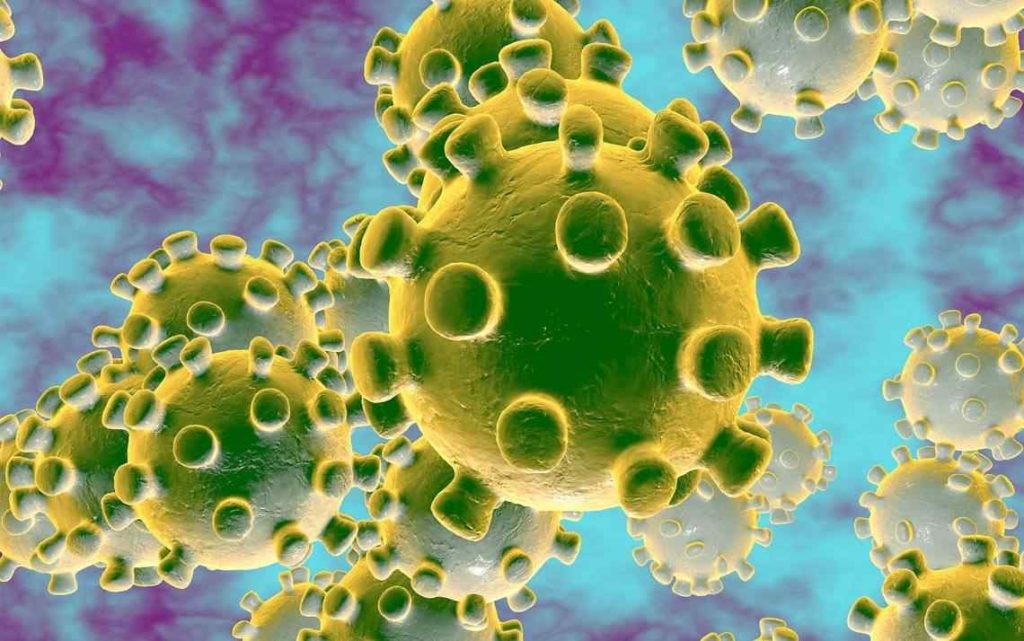Coronaviruses are a family of viruses that was discovered in the 1960s but whose origin is still unknown. Its different kinds cause different diseases, from cough and cold to a austere respiratory syndrome (an austere form of pneumonia).Maximum number of coronaviruses happens not to be unsafe and might be treated efficiently. Actually, most of the people get a coronavirus at a point in their lives, typically at the time of childhood. Although they are more frequent in autumn or winter, they can be purchased at any time of the year.

COVID-19 Coronavirus
The coronavirus be indebted its name to the presence it presents, since it is very similar to a crown or halo. It is a type of virus present in both humans and animals.
Three foremost epidemic outbreaks triggered by coronaviruses have been described in recent years:
SARS-CoV: Severe and acute respiratory syndrome started in November 2002 in China, affected more than 8,000 people in more than 35 countries, and caused over 700 deaths. SARS-Covhumanity has been valued at 10%approximately.
MERS-CoV: Coronavirus triggering Middle East respiratory syndrome (MERS) was detected first in Saudi Arabia in the year of 2012. From October 2019, over 2,400 infection cases have been reported in different countries, with more than 800 deaths. The case fatality is therefore 35%.
COVID-19: In late December 2019, the first cases of a new coronavirus were reported in the city of Wuhan (China). Since that time the drip of newly infected by the SARS-CoV-2 virus (originally called 2019nCoV), which use to cause COVID-19, has been non-stop and its spread from one person to another has speeded. Reported pneumonia cases of Wuhan of already far exceed those of the SARS epidemic, but the case fatality rate is lower.
The World Health Organization (WHO) has declared the pandemic situation. People are infected in most countries and health professionals insist on the need to follow preventive measures and avoid social alarm.
In all over the countries the state of alarm has been decreed and the health authorities insist on the need to stay home to contain the transmission.

COVID-19 Coronavirus Causes
Until now, coronaviruses have been limited to humans. The origin of these viruses is unknown, but certain animals, such as bats, are known to act as reservoirs.
As in rest of the viruses that can cause pneumonia, at the time they are transmitted in one person to another, the infection habituallyhappens throughout the respiratory direction, through the respiratory droplets that people produce when they cough, sneeze, or speak.
Everything seems to indicate that the new coronavirus, COVID-19, also known as Wuhan coronavirus, has an animal origin. In fact, the first cases have been related to a live animal market in the city of Wuhan, in China.
As for MERS, camels use to be likely to be an important reservoir for this kind of coronavirus and an animal source of infection in humans, as stated by the (WHO) World Health Organization in its descriptive note on the disease. However, the specific role of camels in virus transmission and the exact route (s) of transmission are unknown.
Initially, the MERS-CoV coronavirus happens to be a zoonotic virus that use to be transmitted from animals to human. From the enquiry of numerous of its genomes, it is believed that the virus originated in bats and was transmitted to camels at some point in the distant past.
The SARS coronavirus use to be believed to be initiated from bats, afterwards leaping to a few other little mammal species, like the civet, and finally to humans.
COVID-19 Coronavirus Symptoms
In general, the main symptoms of coronavirus infections can be as follows. It will depend on the type of coronavirus and the severity of the infection:
- Cough.
- Sore throat.
- Fever.
- Difficulty breathing (dyspnea).
- Headache.
- Chills and general discomfort.
- Runny nose and runny nose.
The scientific spectrum of this kind of infection differs from the non-appearance of symptoms to acute or mild respiratory symptoms. Usually this typology presents with cough, fever and respiratory difficulties. Pneumonia is common, and gastrointestinal symptoms, especially diarrhea, may also occur in MERS.
As with the influenza virus, the most severe symptoms (and the highest mortality) are registered both in older people and in those individuals with chronic diseases or with immunosuppression such as diabetes, some types of chronic lung disease or cancer. In the most severe cases they can cause respiratory failure.
In the COVID-19 pandemic, it has been found that around 80% of infected people have mild symptoms.

COVID-19 Coronavirus Prevention
To date, no specific vaccine or treatment use to be available to battle coronavirus infection.
Preserving basic hygiene happens to be the most active way of avoidingbonding this virus in spaces where there use to be a greater risk of transmission, mostly in areas where cases have been reported.
It is advisable to wash your hands frequently and avoid contact with people who are already infected, especially protecting your eyes, nose and mouth.
People infected (or who think they may be) are advised to wear face masks and to use handkerchiefs to cover their nose and mouth when coughing or sneezing.
People infected with the virus that causes COVID-19 should be quarantined from the time the disease is diagnosed until 15 days after discharge.
This is recommended by the WHO because it has been observed that, although they are already recovered, they can continue to transmit the infection.
The healthy general population does not need to wear protective masks, as they help prevent the transmission of the virus if they are worn by people who are sick.
The Ministry of Health warns that an inappropriate use of masks can contribute to shortages in those situations for which they are indicated
Preventive measures should be followed especially by those with diabetes, kidney failure, chronic lung disease, or immunosuppression, as they are at increased risk of severe disease in case of coronavirus infection.
COVID-19 Coronavirus Types
In human coronaviruses, the severity can vary substantially from one type to another:
Cold coronavirus
This variation of coronavirus matches to sorts 229E and OC43, that cause the usual symptoms of a cold, although in more severe cases they can also cause pneumonia in the elderly or in neonates.
SARS(Severe acute respiratory syndrome)
It happens to be a serious form of pneumonia. It sources respiratory distress as well as fever higher than 38 degrees. The 2002 outbreak spread worldwide, although its frequency has always been higher in East Asia.
Middle East respiratory syndrome (MERS-CoV)
It causes severe respiratory issues, in addition to cough, fever and trouble breathing, although at first it may be asymptomatic.
In the most severe cases, expectoration of blood, diarrhea and vomiting also occur. It had its first outbreak in 2012 and since then many cases have been reported in the Middle East, although it has also reached Europe and the United States.
Coronavirus COVID-19
The new coronavirus detected in late 2019, causing COVID-19, in China shows a genetic sequence that matches that of SARS by 80%. However, at first it seems less virulent and with a lower case fatality rate.
On the other hand, its transmission has been much higher, it has already caused several thousand more cases than SARS and, as a consequence, the number of deaths is also much higher.
COVID-19 Coronavirus Diagnosis
To determine if a patient’s discomfort comes from a simple cold or coronavirus, doctors can perform a nose and throat culture, or even a blood test.
In cases of assumed coronavirus, a chest tomography happens to be usually accomplished to regulate the symptoms of pneumonia, and further a biochemical test, blood clotting tests, and a blood count. Antibody testing and isolation of the SARS virus are also performed.
Likewise, in order to contain the transmission, an evaluation is made to those people who present the symptoms and who may be prone to contract the virus.
The temperature control (with digital thermometers and thermal cameras) of people received at an airport from pretentious areas has been one of the measures that have been put in place to detect possible cases of COVID-19, as did with the previous shoots.
Questionnaires are also conducted for travelers; in case of suspicion, they undergo evaluation and, where appropriate, they are transferred to health centers.
COVID-19 Coronavirus Treatments
There happens not to be any vaccine contrary to the human coronavirus that use to cause a cold, but milder cases might be speechless by following the similar steps as a common cold.
This does not require medical interference and simply by washing your hands recurrently, resting and drinking ample of fluids, the indications will vanish after some days.
In cases of SARS coronavirus, MERS CoV and COVID-19, hospital admission is usually convenient in severe cases. In the cases that the doctors consider it necessary, antivirals, high doses steroids use to be administered to reduce the pulmonary inflammation and a respiratory support with oxygen; Occasionally, it may require antibiotics, but only in the event of supervening bacterial infections, that is, super infection.
What can you do for protecting yourself from the Covid-19 coronavirus?
The best way of preventing infection is avoiding contact to the virus that causes the Covid-19 coronavirus and sustain proper hygiene. There used to bebasicanticipatory, everyday measures to assist prevent the spread of this respiratory viruses.
These comprise the following:
- Stay away from close contact with sick people.
- Do not touch your nose, eyes, and mouth with your hands without washing.
- Wash your hands frequently with soap and water at least for 40 seconds. Make use of a hand sanitizer containing 60% alcohol at least in the vent that soap and water happens not to be available.
- If you are not well, to prevent the spread of respiratory illness to others, you should stay home.
- Cover your nose and mouth with a disposable tissue at the time you sneeze or cough, and throw it away then and then.
- Clean and sanitize often touched surfaces and objects.
- Masks are not suitable for healthy patients. They should only be used by infected patients.
In summary, these types of respiratory infections are treated with antivirals (at the discretion of the healthcare professional) and supportive measures. Treatment is usually adapted depending on the rigorousness of the patient,meanwhile there use to be cases in which austere pneumonia happens, but in rest of the cases the manifestations are slight.






